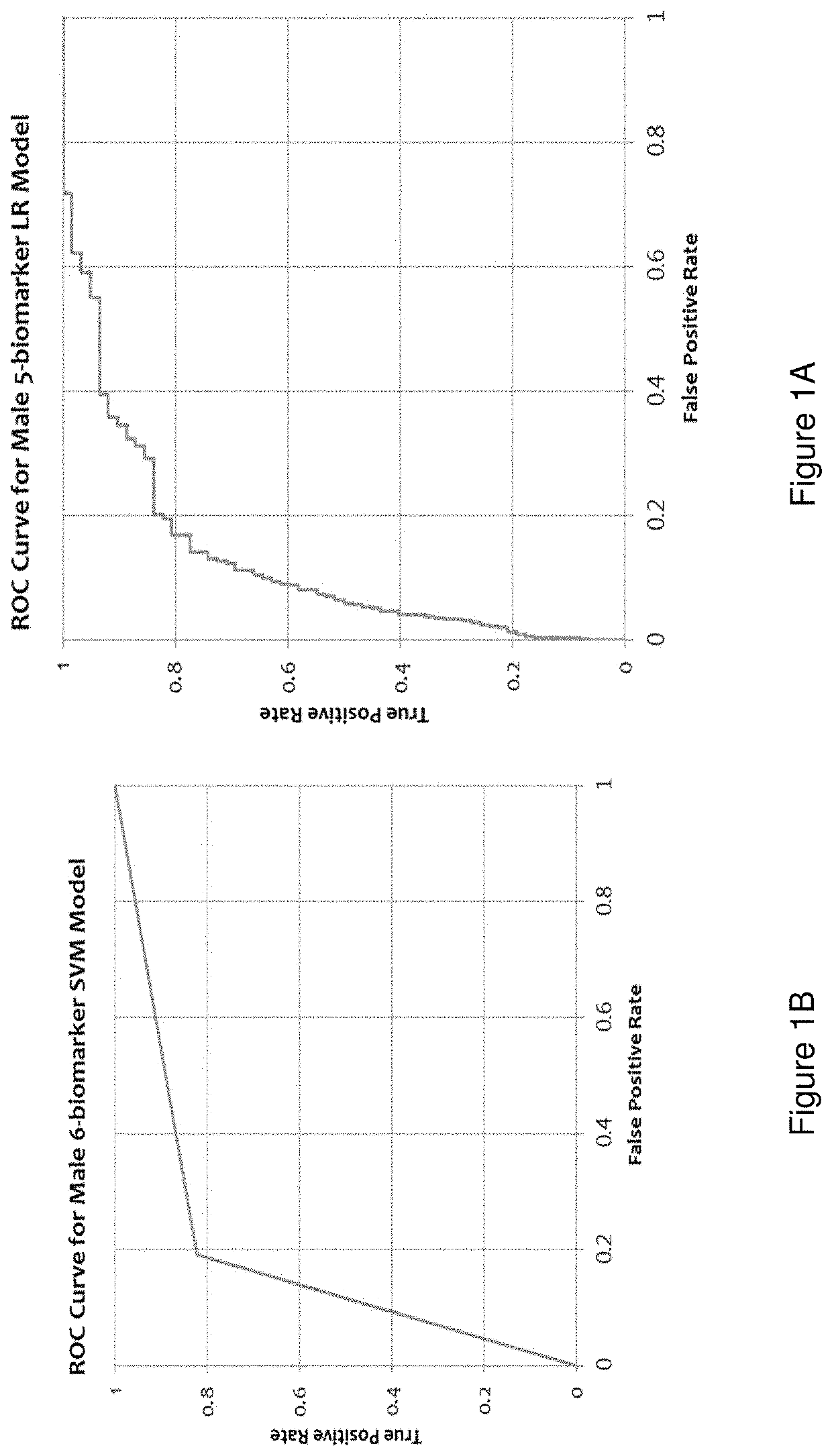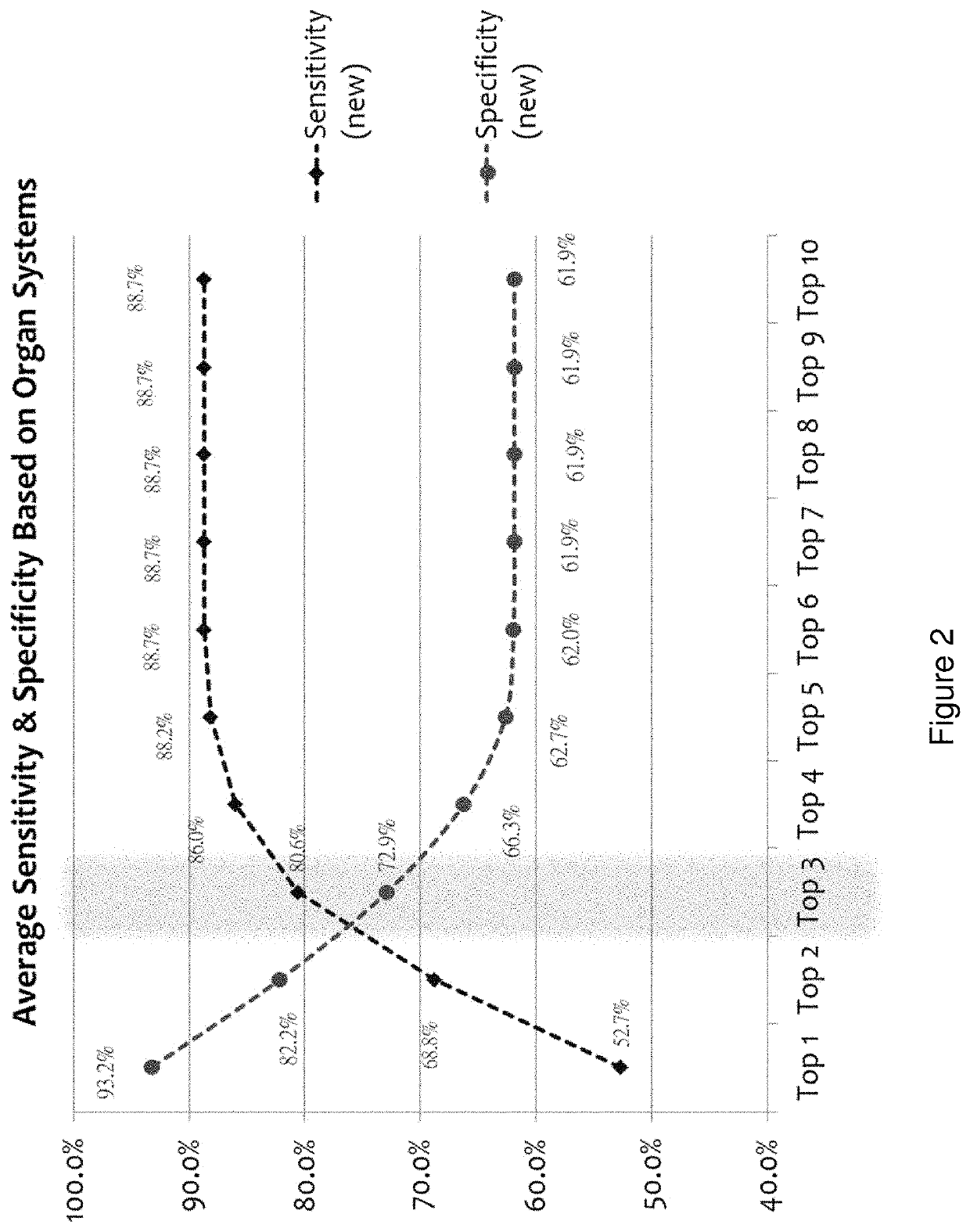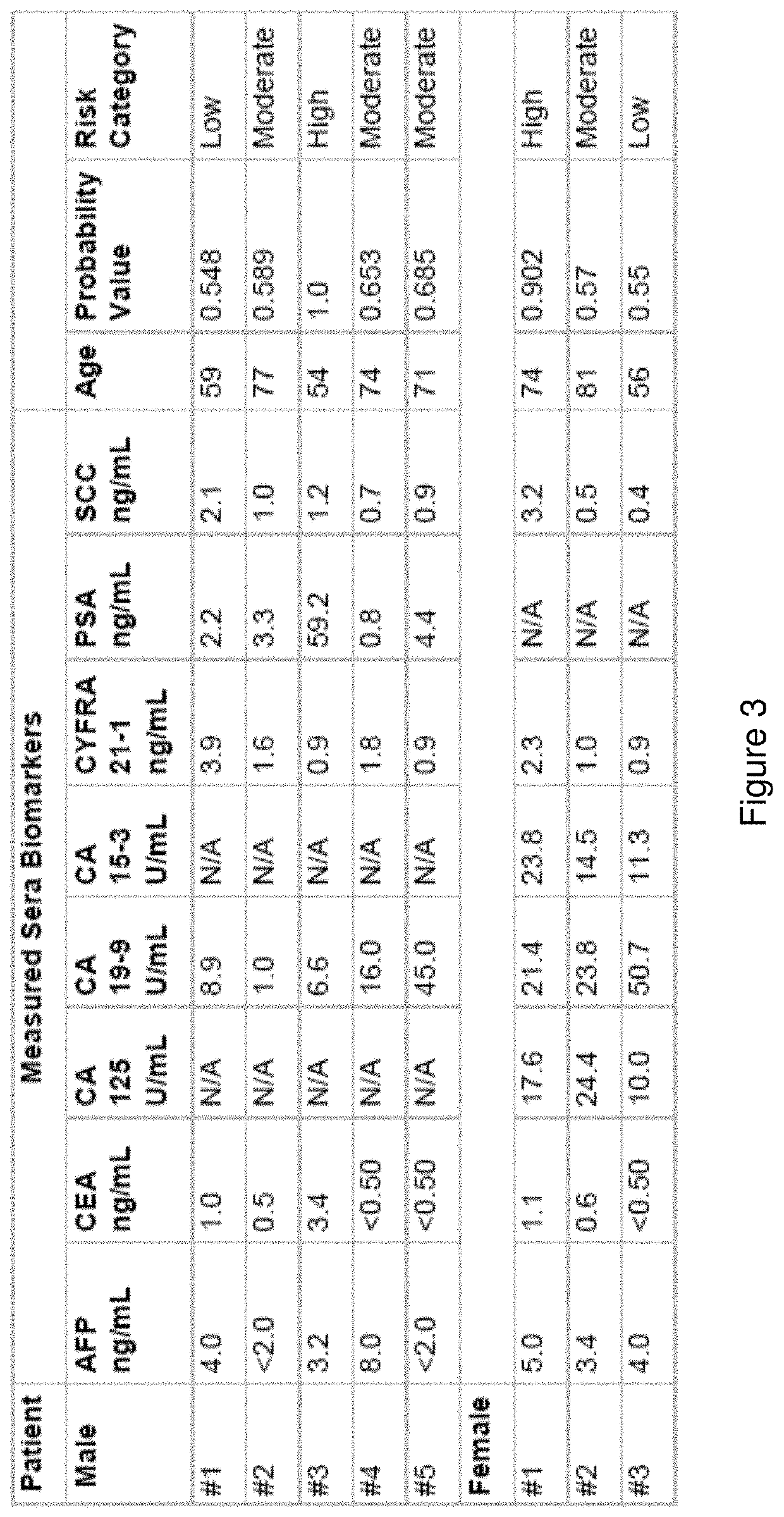Cancer classifier models, machine learning systems and methods of use
- Summary
- Abstract
- Description
- Claims
- Application Information
AI Technical Summary
Benefits of technology
Problems solved by technology
Method used
Image
Examples
example 1a
t of a Multi-Marker Model for Classifying Asymptomatic Patients as to Developing Cancer: “Pan Cancer” Test
[0159]Provided herein is a multi-marker classification model and method for identifying asymptomatic patients with an increased risk for developing cancer. That risk can be categorized as “low”, “medium / moderate” or “high risk” for developing cancer, wherein the ranges for those categories may be based on, for example, probability of developing cancer within 6 months to a year, wherein the probability is measured against baseline level of cancer in the heterogenous population. It is understood in the art, that the rate of cancer is about 1% in the general population. The prevalence of cancer in the cohort used to develop the present Pan Cancer test was about 1.5%. See the below examples for more detail on the use of the test and probability values. The development of the classifier model, and the selection of markers (both blood and clinical parameters) may be based on a combina...
example 1b
t of a Multi-Marker Model for Classifying Asymptomatic Patients as to Developing Cancer: Inclusion of Clinical Factor “Age” in Model
[0180]Disclosed herein is an improved multi-marker model for classifying asymptomatic patients as to having or developing cancer. The above classifier model using only a panel of measured biomarkers was previously published wherein the performance of a Receiver Operating Characteristic (ROC) curve for the cohort of males was very low; sensitivity value of 0.515 and a specificity value of 0.851. The cohort of females had an even lower performance of a ROC curve with a sensitivity value of 0.345 and a specificity value of 0.880. See Tables 7 and 8 of Wang H. Y., Hsieh C. H., Wen C. N., Wen Y. H., Chen C. H. and Lu J. J., “Cancers Screening in an Asymptomatic Population by Using Multiple Tumour Markers” PLoS One, Jun. 29, 2016. In other words, the previous classifier model using only measured sera biomarkers was acceptable for excluding the risk of cancer ...
example 2
nt of a Model for Predicting Organ System-Based Malignancy for Individuals in the “High Risk” and “Moderate Risk” Category Based on the Pan Cancer Test
[0182]Provided herein are techniques for predicting organ system-based malignancy for a patient with an increased risk of having cancer as identified in Example 1. That information can then be used to refer patients to a specialist for more invasive diagnostic testing.
[0183]Using the entire cohort of cancer subjects (n=186) and the same six (or 5 for female individuals) biomarker measurements along with age and gender, we applied a model comprising a pattern recognition algorithm, and a k-Nearest Neighbors algorithm (kNN) employing a leave-one-out evaluation method to predict the top 1, 2, 3, 4, 5, 6, 7, 8, 9, or 10 cancers for each sample. The accuracies are reported in Table 5 and reflect the percentage of cases of each cancer type that were found in the top N (N=10 for Table 5) predicted cancers. Clearly, the accuracy of prediction...
PUM
 Login to View More
Login to View More Abstract
Description
Claims
Application Information
 Login to View More
Login to View More - R&D
- Intellectual Property
- Life Sciences
- Materials
- Tech Scout
- Unparalleled Data Quality
- Higher Quality Content
- 60% Fewer Hallucinations
Browse by: Latest US Patents, China's latest patents, Technical Efficacy Thesaurus, Application Domain, Technology Topic, Popular Technical Reports.
© 2025 PatSnap. All rights reserved.Legal|Privacy policy|Modern Slavery Act Transparency Statement|Sitemap|About US| Contact US: help@patsnap.com



